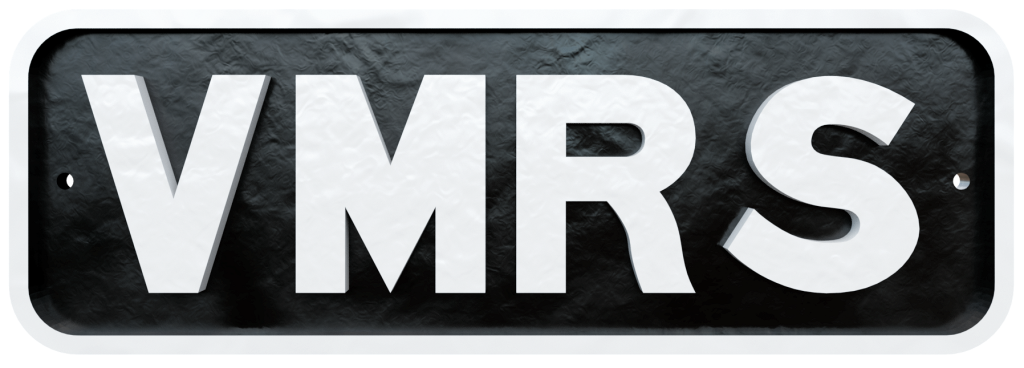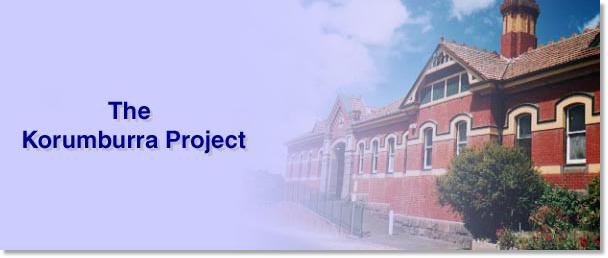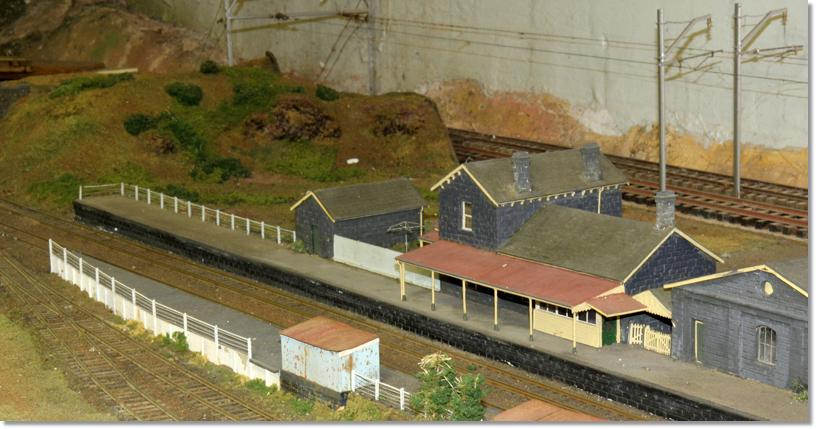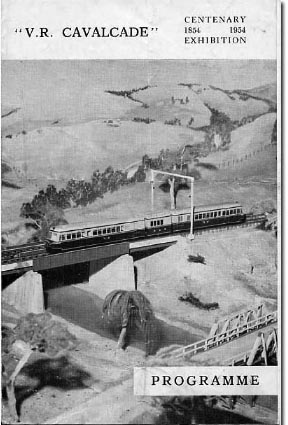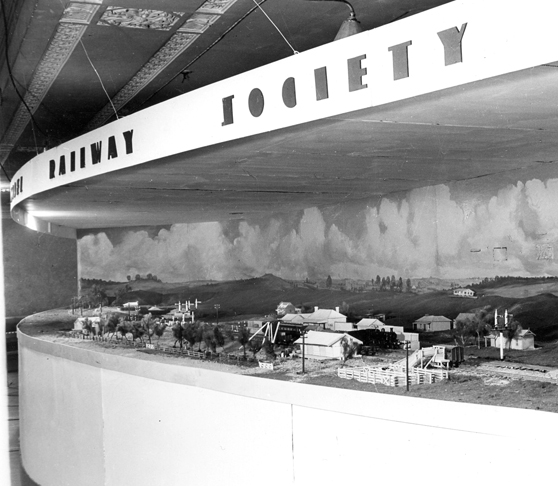In September 1954, to mark the centenary of the Victorian Railways, an exhibition of old and new motive power and rolling stock was held at Spencer Street station. This show was supported by an exhibition of models showing representative trains from a number of periods in the VR’s history. The model exhibition was held in the Lower Melbourne Town Hall and the models were built by members of the VMRS. No. 1. Australia’ first train, 1854 This train, the precursor of all railway rolling stock in the Commonwealth, ran from Flinders Street to Sandridge, a distance of 2.5 miles. Its locomotive was designed byt the Hobson’s Bay Company’s engineer and built in Melbourne. Other engines, ordered from England, did not arrive in time for the opening of the line. This model is a representation of what Australia’s first train was thought to have looked like although serious doubt is now attached to this conjecture. The locomotive was built by Russ Siddal and the cars by Jim Blayney. Russ also made the models of the band of the 40th Regiment of Foot. They are riding in an IB wagon which was also built by Jim. Researching the instruments and the music proved interesting and “Lillibulero” was finally chosen as a suitable period tune to accompany this train. No. 2. Mixed train of the 1890’s Hauled by a Y class locomotive, such trains were used on branch lines where traffic did not warrant separate passenger and goods services. The mixed train has since been large supplanted by the rail motor for passenger traffic. Although the programme describes this as a Y class locomotive, the asymmetrical wheel arrangement suggests that it is in fact an RY (rebuilt from R) class. The model ended up in the Science Museum. No. 3. Goods Train, about 1900 The V classs locomotive hauling this train was the first “Consolidation” 2-8-0 type of heavy goods engine used in Victoria. These locomotives were another step in increasing locomotive power to cope with heavier trains and longer hauls. The V class were the only compound locomotives to run on the VR broad gauge. They were later converted to simple expansion configuration. No. 4. Sydney Express, 1910 In June 1883, the Melbourne and Sydney rail link was completed at Albury. In August an express service betweeen the two capitals began. New cars, as exemplified in the model, were introduced in 1907 and, in the following year, the first of the famcous A2 locomtives began hauling the express. The A2 class locomotive was built by Andy Lyall. It is presented in the relatively short-lived Canadian Red livery which was actually a two-tone colour scheme of a rich brown set off by a darker, chocolate brown. The carriages, built by Ford Niquet represent the then new, 12-wheeled, E stock. First class AE cars, second class BEs as well as Dining Car and Parlour Car made up the train. No. 5. Spirit of Progress This “crack” train made its inaugural run on the Melbourne-Albury service on November 23, 1937. From then until early this year (1954) it was hauled by one of the streamlined S class locomotives. Since April 23,1954 Spirit of Progress has been hauled by a diesel-electric locomotive. It is Australia’s fastest train, having an average speed of 49.7 mph (about 80kph) on the “down” journey and 51.95 on the “up”. Before they acquired their streamlined outer casing the S class locomotives displayed classic lines and are regarded as one of the most handsome classes of locomotives to run in this country. It is believed that Alan Goode made the whole train. No.6. Interstate fast goods train This modern train hauled by locomtive H220 (Heavy Harry), gives a fast freight service between Melbourne and Albury, connectin with the fast goods to and from Sydney. It provides a 48-hour service between the two capitals. Much of the freight is carried in the (then) new 5.5 ton steel containers which are safeguard against losses by damage or pilfering, during their door-to-door service. H class locomotives were designed to do away with double heading on the Overland which ran between Melbourne and Adelaide. Wartime restrictions prevented the upgrading of the western line and H220, the only one of its class to be built, spent most of its working life on the north-east line, mostly working goods trains. No. 7. The Flier Beginning as the Geelong Flier in 1926 with an express service between Melbourne and Geelong, The Flier as it is now called, serves Victoria’s famous Western District. It has cut the original 70 minutes to Geelong down to 55, and has brought Port Fariy well within six hours of the capital. The Flier is now (1954) hauled by B class diesel-electric locomotive on the “down” journey and by a diesel-electric or one of the new R class steam engines on the “up”. The R class were the first to be delivered in black livery with red smoke lifters, valance and buffer beams. The Flier ran a fast service between Melbourne and Geelong. VMRS has possession of this model of R700, which was built by Alan Shorter. The carriages are by Bill Fairlam and include AW cars, BW cars and a CW van. No. 8. The Overland Hauled by two diesel-electric locomotives, the modern Overland is a daily express, in both directions, between Melbourne and Adelaide. It incorporates the most up-to-date refinements of air-conditioned rooette and twinette sleeping cars and sitting cars of saloon type. The B class locomotive models were made by Alan Shorter. The VMRS still owns one of them. Alan Goode made the carriages on this train. No. 9. Brown coal train The Gippsland line is being duplicated, regraded and electrified to meet the demands of increasing fuel output from Yallourn and Morwell and to serve the rapidly growing needs of the Latrobe Valley generally. Electric trains now (1954) run as far as Warragul; they will eventually run to Yallourn and Traralgon. The new L class main-line electric locomtives haul both passenger and
